Abstract
154 of 255 individual human renal biopsies studied by immunofluorescence contained varying combinations of immunoglobulins (Ig), complement (C) components C1q, C3, C4, C5, C6, C8, C3 proactivator (C3PA), and/or properdin. 10 patients had linear deposits of Ig in glomeruli characteristic of antiglomerular basement membrane (GBM) antibodies; nine patients had C3 deposits (minimal in three) with generally lesser amounts of C1q, C4, C5, C6, and/or C8. 118 of the patients had granular deposits of Ig, suggesting immune complex glomerulonephritis; 114 of these had deposits of C3, usually accompanied by C1q, C4, C5, and/or C6. These observations indicate that the entire C sequence is deposited in glomeruli in most Ig-mediated glomerulonephritides. However, certain cases of anti-GBM glomerulonephritis with few or no C deposits may utilize pathways of injury independent of C.
21 patients had granular C3 deposits without detectable Ig. C5, C6, and C8 were present in the majority of these patients while C1q was absent and scant C4 was observed in only two patients. The presence of only late-acting C components in the absence of Ig, C1q, and C4 suggests selective, possible nonimmune activation of the alternate C pathway. Finally, five patients had granular deposits of C3, C5, C6, and/or C8 diffusely in all or most glomeruli with a lesser number of glomeruli having additional focal granular deposits of Ig, C1q, and C4. This observation suggests that at least two patterns of C activation can occur simulatenously, possibly triggered by antecedent immune complex deposition and then perpetuated by an as yet undetermined mechanism.
Full text
PDF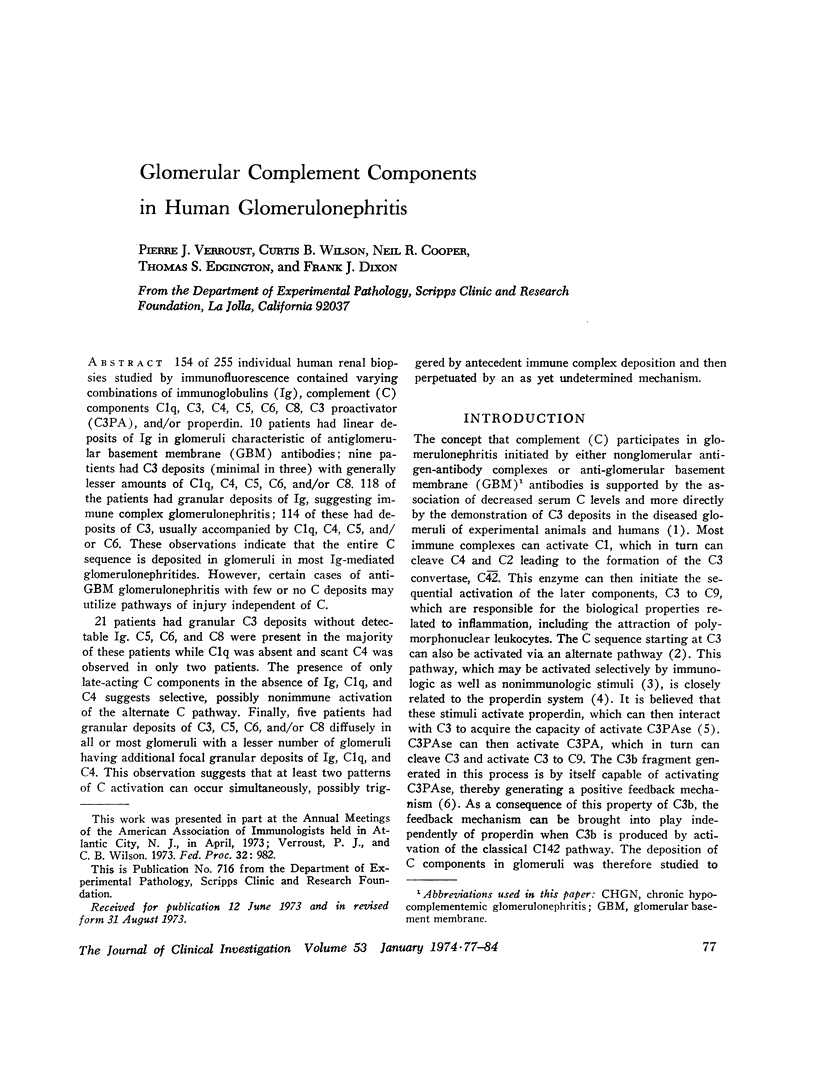
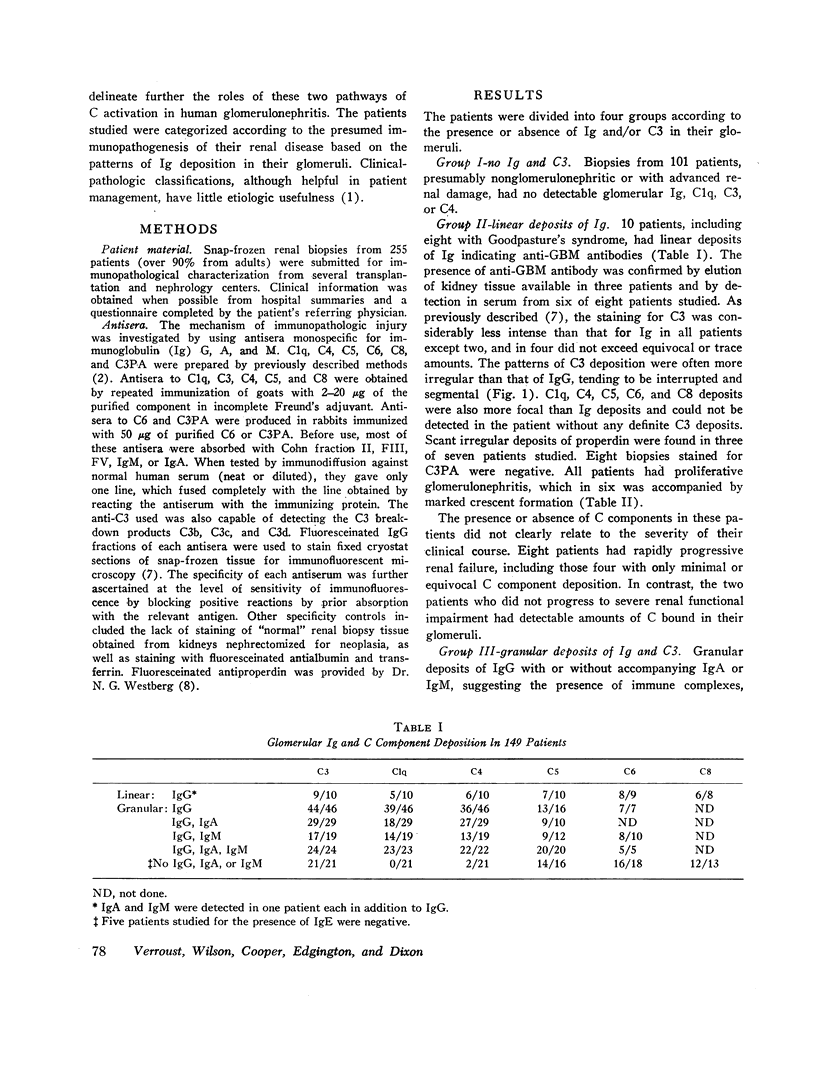
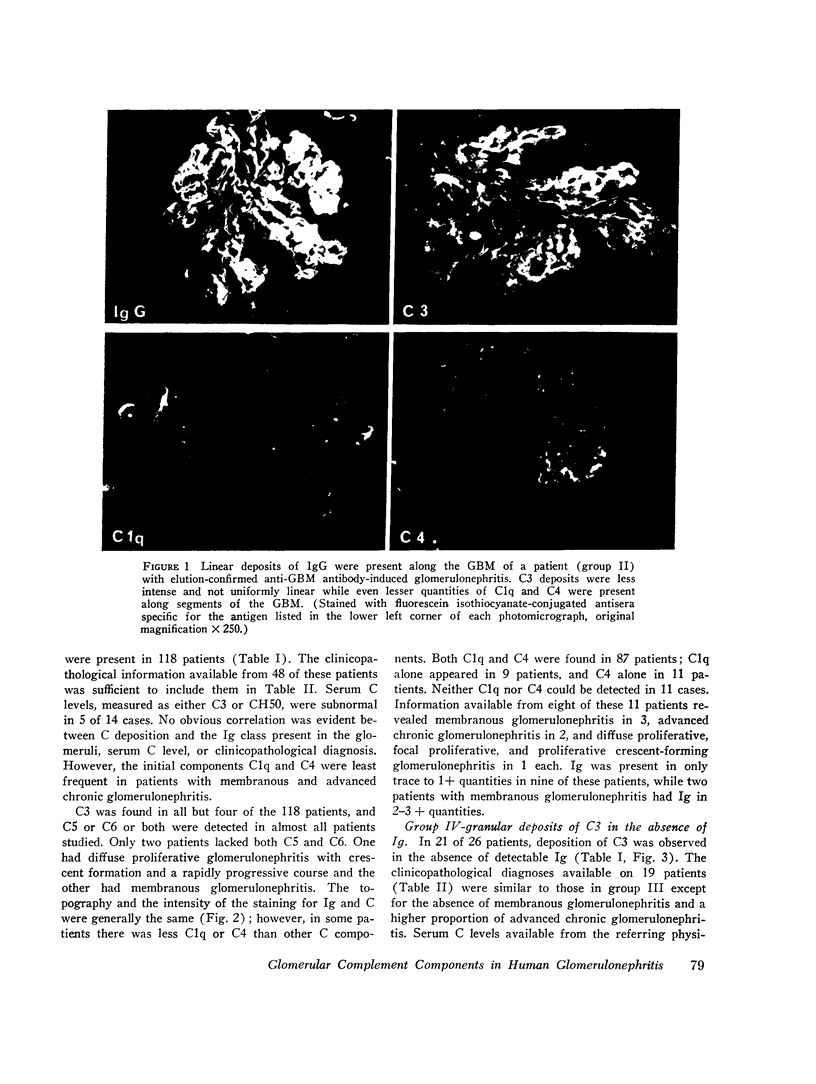
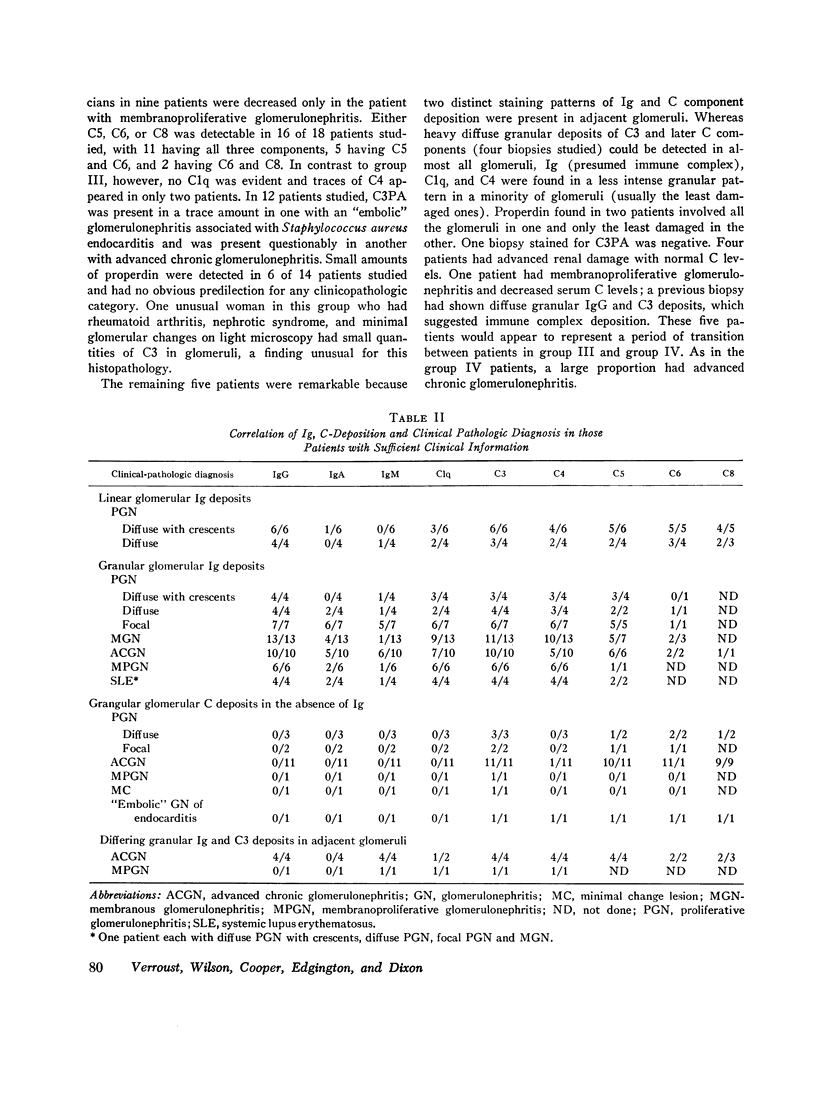
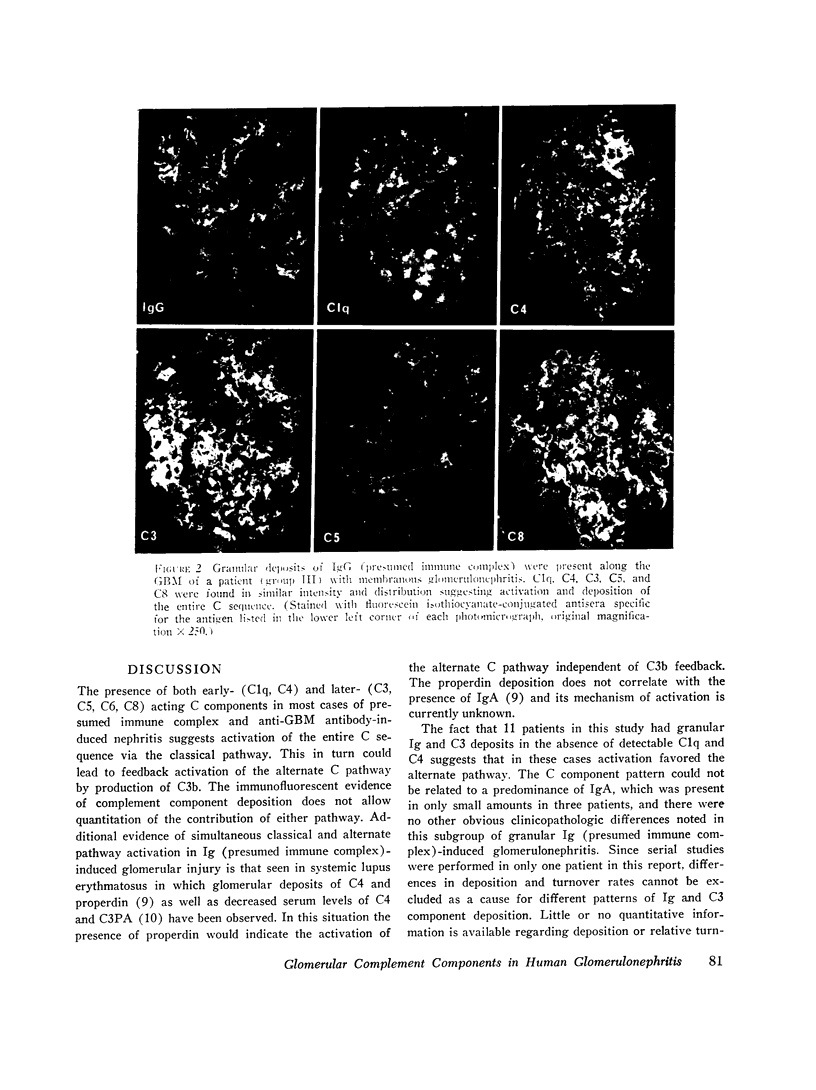
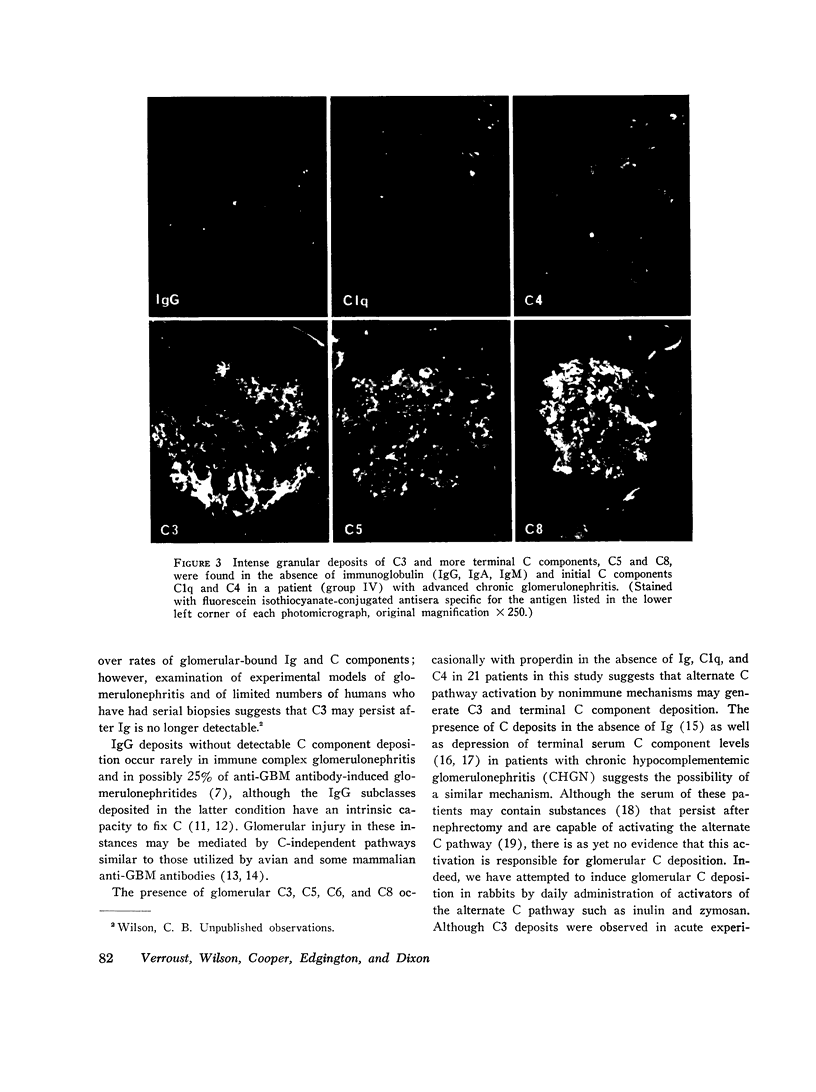
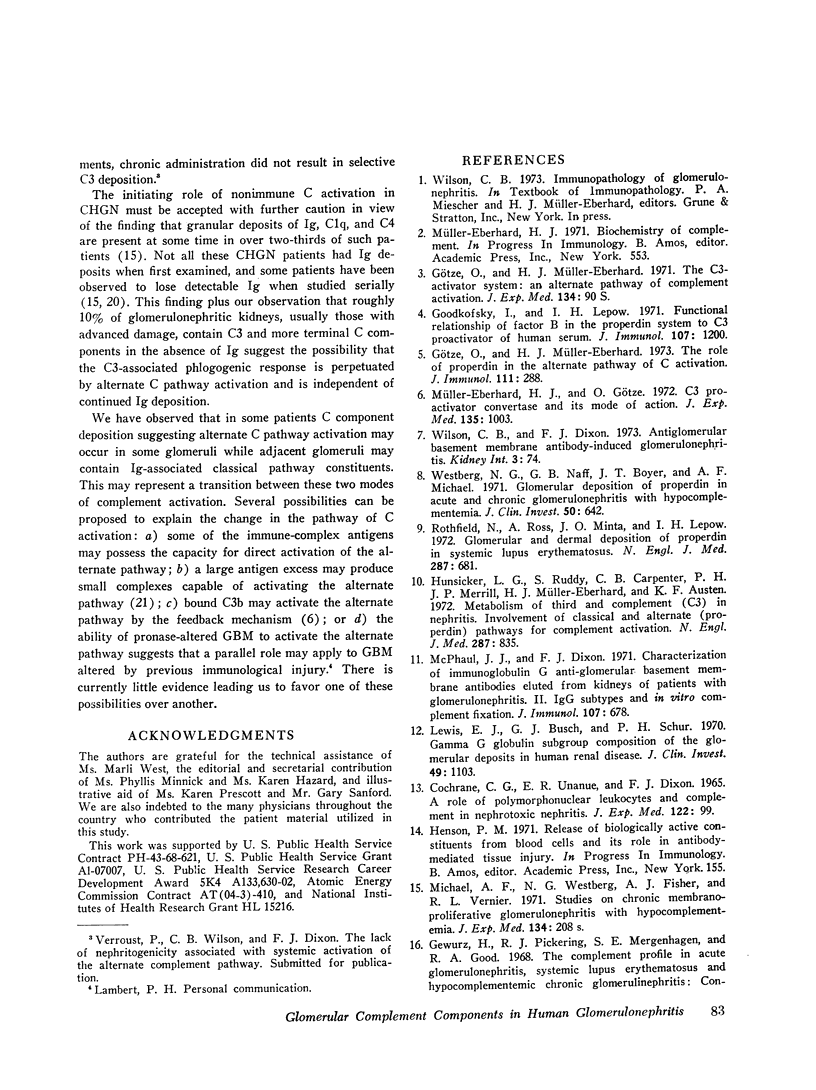
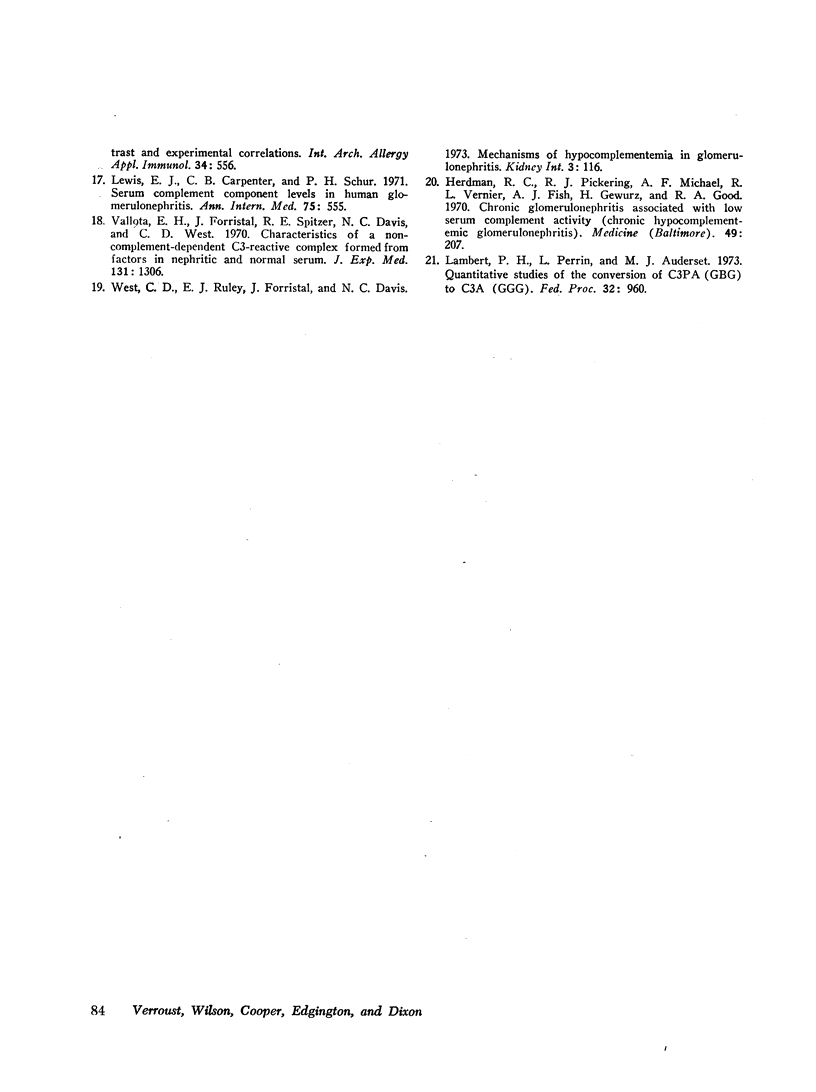
Images in this article
Selected References
These references are in PubMed. This may not be the complete list of references from this article.
- COCHRANE C. G., UNANUE E. R., DIXON F. J. A ROLE OF POLYMORPHONUCLEAR LEUKOCYTES AND COMPLEMENT IN NEPHROTOXIC NEPHRITIS. J Exp Med. 1965 Jul 1;122:99–116. doi: 10.1084/jem.122.1.99. [DOI] [PMC free article] [PubMed] [Google Scholar]
- Gewurz H., Pickering R. J., Mergenhagen S. E., Good R. A. The complement profile in acute glomerulonephritis systemic lupus erythematosus and hypocomplementemic chronic glomerulonephritis. Contrasts and experimental correlations. Int Arch Allergy Appl Immunol. 1968;34(6):556–570. doi: 10.1159/000230149. [DOI] [PubMed] [Google Scholar]
- Goodkofsky I., Lepow I. H. Functional relationship of factor B in the properdin system to C3 proactivator of human serum. J Immunol. 1971 Oct;107(4):1200–1204. [PubMed] [Google Scholar]
- Hunsicker L. G., Ruddy S., Carpenter C. B., Schur P. H., Merrill J. P., Müller-Eberhard H. J., Austen K. F. Metabolism of third complement component (C3) in nephritis. Involvement of the classic and alternate (properdin) pathways for complement activation. N Engl J Med. 1972 Oct 26;287(17):835–840. doi: 10.1056/NEJM197210262871701. [DOI] [PubMed] [Google Scholar]
- Lewis E. J., Busch G. J., Schur P. H. Gamma G globulin subgroup composition of the glomerular deposits in human renal diseases. J Clin Invest. 1970 Jun;49(6):1103–1113. doi: 10.1172/JCI106326. [DOI] [PMC free article] [PubMed] [Google Scholar]
- Lewis E. J., Carpenter C. B., Schur P. H. Serum complement component levels in human glomerulonephritis. Ann Intern Med. 1971 Oct;75(4):555–560. doi: 10.7326/0003-4819-75-4-555. [DOI] [PubMed] [Google Scholar]
- McPhaul J. J., Jr, Dixon F. J. Characterization of immunoglobulin G anti-glomerular basement membrane antibodies eluted from kidneys of patients with glomerulonephritis. II. IgG subtypes and in vitro complement fixation. J Immunol. 1971 Sep;107(3):678–684. [PubMed] [Google Scholar]
- Müller-Eberhard H. J., Götze O. C3 proactivator convertase and its mode of action. J Exp Med. 1972 Apr 1;135(4):1003–1008. doi: 10.1084/jem.135.4.1003. [DOI] [PMC free article] [PubMed] [Google Scholar]
- Pickering R. J., Herdman R. C., Michael A. F., Vernier R. L., Gewurz H., Fish A. J., Good R. A. Chronic glomerulonephritis associated with low serum complement activity (chronic hypocomplementemic glomerulonephritis). Medicine (Baltimore) 1970 May;49(3):207–226. doi: 10.1097/00005792-197005000-00002. [DOI] [PubMed] [Google Scholar]
- Rothfield N., Ross H. A., Minta J. O., Lepow I. H. Glomerular and dermal depostion of properdin in systemic lupus erythematosus. N Engl J Med. 1972 Oct 5;287(14):681–685. doi: 10.1056/NEJM197210052871402. [DOI] [PubMed] [Google Scholar]
- Vallota E. H., Forristal J., Spitzer R. E., Davis N. C., West C. D. Characteristics of a non-complement-dependent C3-reactive complex formed form factors in nephritic and normal serum. J Exp Med. 1970 Jun 1;131(6):1306–1324. doi: 10.1084/jem.131.6.1306. [DOI] [PMC free article] [PubMed] [Google Scholar]
- West C. D., Ruley E. J., Forristal J., Davis N. C. Mechanisms of hypocomplementemia in glomerulonephritis. Kidney Int. 1973 Feb;3(2):116–125. doi: 10.1038/ki.1973.18. [DOI] [PubMed] [Google Scholar]
- Westberg N. G., Naff G. B., Boyer J. T., Michael A. F. Glomerular deposition of properdin in acute and chronic glomerulonephritis with hypocomplementemia. J Clin Invest. 1971 Mar;50(3):642–649. doi: 10.1172/JCI106534. [DOI] [PMC free article] [PubMed] [Google Scholar]
- Wilson C. B., Dixon F. J. Anti-glomerular basement membrane antibody-induced glomerulonephritis. Kidney Int. 1973 Feb;3(2):74–89. doi: 10.1038/ki.1973.14. [DOI] [PubMed] [Google Scholar]





